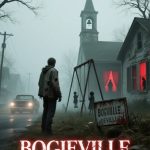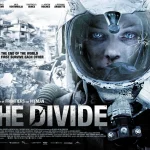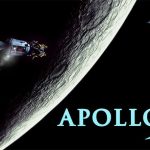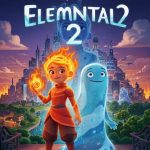Iconic Animated Films: From Childhood Favorites to Modern Hits

Related Movies:
Related Movies:
Related Movies:
Related Movies:
Related Movies:
Related Movies:
Related Movies:
Cinderella (1950) – Animated Classic Review
Cinderella, Disney’s 1950 animated classic, is one of the most iconic fairy tales ever told, captivating generations with its magical charm and timeless story. The film follows the journey of a kind-hearted young woman named Cinderella, who is mistreated by her wicked stepmother and stepsisters but dreams of a better life. With the help of her Fairy Godmother, who transforms her life with a touch of magic, Cinderella is granted the opportunity to attend the royal ball, where she meets the Prince and begins a love story that will change her fate forever.
The film is a quintessential Disney fairy tale, filled with magic, hope, and the triumph of kindness. Cinderella, as the protagonist, embodies qualities of resilience, kindness, and humility, making her a character that audiences can easily root for. Her unwavering belief in goodness, despite the cruelty she faces, sends a message of optimism and hope that resonates across generations.
Visually, Cinderella is a triumph of early animation, with soft, pastel color palettes and beautifully crafted, hand-drawn backgrounds. The ballroom scene, in particular, remains one of the most breathtaking moments in animation history, with Cinderella’s transformation into a beautiful princess and the iconic dance with the Prince.
The supporting characters add charm and humor to the story. From the lovable mice, Gus Gus and Jaq, who assist Cinderella in her time of need, to the Fairy Godmother, whose enchanting magic brings hope, these characters bring joy and warmth to the film. Of course, the evil stepmother and stepsisters provide the perfect foil to Cinderella’s goodness, with their cruelty and vanity creating the perfect contrast to the protagonist’s character.
The film’s music is also a standout feature, with the whimsical and romantic score complementing the fairytale atmosphere. Songs like “A Dream Is a Wish Your Heart Makes” and “Bibbidi-Bobbidi-Boo” are timeless Disney classics, capturing the magic and hopefulness that Cinderella represents.
At its core, Cinderella is about resilience, believing in one’s dreams, and the power of kindness. It teaches valuable lessons about inner beauty, staying true to oneself, and trusting that good things will come, even in the face of adversity.
Snow White and the Seven Dwarfs (1937) – Animated Classic Review
Snow White and the Seven Dwarfs, Disney’s first-ever full-length animated feature, is a groundbreaking classic that has stood the test of time. Released in 1937, this film is not just the beginning of the Disney animated canon but also a testament to the power of animation as a storytelling medium. Based on the Brothers Grimm fairy tale, the film follows Snow White, a kind-hearted princess who escapes the clutches of her evil stepmother, the Queen, after the Queen grows jealous of Snow White’s beauty. With the help of seven dwarfs she befriends, Snow White must evade the Queen’s wicked plans and ultimately find her happily ever after.
The movie’s plot centers around themes of innocence, kindness, and the battle between good and evil. Snow White herself is a symbol of pure goodness, offering a contrast to the Queen’s wickedness. Despite facing immense adversity, Snow White’s kind and optimistic nature ultimately leads her to triumph. The film’s message—that kindness, purity, and love always prevail—is timeless, resonating with audiences of all ages.
Visually, Snow White and the Seven Dwarfs was revolutionary for its time. The hand-drawn animation is rich in detail and charm, with vibrant backgrounds, expressive characters, and fluid movements. The dwarfs, each with their unique personality, bring humor and warmth to the film, providing a perfect balance to the darker moments of the Queen’s villainy. The Queen’s transformation into the Old Hag remains one of Disney’s most iconic moments in animation, showcasing the film’s ability to blend beauty and terror seamlessly.
The film’s iconic characters are a huge part of its enduring appeal. Snow White is an innocent and optimistic heroine, while the seven dwarfs—Doc, Grumpy, Happy, Sleepy, Bashful, Sneezy, and Dopey—each bring their distinct charm to the story. The Evil Queen, voiced by Lucille La Verne, is one of Disney’s most memorable villains, with her dramatic, sinister appearance and obsession with beauty. Her transformation into the Old Hag is one of the most chilling moments in animation history.
The film’s music is another standout, with songs like “Some Day My Prince Will Come” and “Heigh-Ho” becoming timeless classics. The music not only complements the film’s mood but also reinforces its themes of hope and perseverance.
As Disney’s first feature-length animated film, Snow White set the standard for animation and fairy tale adaptations. It was groundbreaking in its ability to tell a story through animation and remains an important milestone in cinematic history.
Beauty and the Beast (1991) – Animated Classic Review
Beauty and the Beast, Disney’s 1991 animated masterpiece, is a timeless tale that blends romance, magic, and self-discovery. Based on the French fairy tale by Jeanne-Marie Leprince de Beaumont, the film tells the story of Belle, a kind and intelligent young woman who finds herself trapped in an enchanted castle with a Beast—once a prince who was cursed due to his arrogance. As Belle grows closer to the Beast, they form an unlikely bond, and she begins to see beyond his monstrous exterior. With the curse threatening to remain forever, Belle must confront her deepest fears, and together, they learn the power of love, kindness, and sacrifice.
At the heart of Beauty and the Beast is the theme of inner beauty. Both Belle and the Beast are initially misunderstood, and the film challenges traditional notions of beauty by focusing on their inner growth. Belle’s intelligence, independence, and kindness make her stand out as one of Disney’s most relatable heroines. She is more than just a beautiful princess—she is a woman with dreams, aspirations, and a love for books. The Beast, on the other hand, starts as a figure of fear and anger but learns to open his heart, showing that true beauty lies in one’s actions, not appearances.
The animation in Beauty and the Beast is breathtaking, with lush, detailed environments that draw the viewer into the enchanted world. The iconic ballroom scene, where Belle and the Beast share a graceful dance, remains one of the most memorable moments in animation history. The sweeping animation, coupled with the beautifully composed score, creates an unforgettable visual and emotional experience.
The film’s music, composed by Alan Menken with lyrics by Howard Ashman, plays a pivotal role in its success. The songs are iconic and memorable, with “Be Our Guest” and “Beauty and the Beast” being standouts that have become part of Disney’s musical legacy. “Beauty and the Beast” is a touching, romantic ballad that perfectly encapsulates the heart of the story, and it was deservedly awarded an Academy Award for Best Original Song.
The voice cast brings these beloved characters to life. Paige O’Hara’s performance as Belle is tender and spirited, while Robby Benson’s portrayal of the Beast conveys both vulnerability and strength. Supporting characters like the animated household objects—Lumière, Cogsworth, Mrs. Potts, and Chip—add humor, warmth, and charm, further enriching the story.
Beauty and the Beast was groundbreaking not just for its storytelling and animation but also for being the first animated film to be nominated for the Academy Award for Best Picture. This recognition was a testament to the film’s artistry, depth, and universal appeal.
Lilo & Stitch (2002) – Animated Sci-Fi Comedy Review
Lilo & Stitch, Disney’s 2002 animated film, is a unique blend of heart, humor, and adventure that stands apart from many of Disney’s traditional fairy tales. Set in the beautiful Hawaiian Islands, the film tells the story of Lilo, a quirky young girl who adopts what she believes to be a dog, but is actually a mischievous, genetically engineered alien experiment named Stitch. As Lilo and Stitch form an unlikely bond, they navigate the challenges of family, friendship, and belonging, all while Stitch is being hunted by his creator, Dr. Jumba, who is determined to recapture him.
At its core, Lilo & Stitch is a story about family and the importance of finding where you truly belong. Lilo, despite being an oddball and often misunderstood by others, learns that family is about more than just blood—it’s about unconditional love and acceptance. Stitch, initially an out-of-control, destructive force, learns the same lesson as he bonds with Lilo and her sister Nani. The film cleverly blends a sci-fi concept with deep emotional themes, making it both entertaining and meaningful.
The animation is vibrant and beautifully captures the essence of Hawaii, with its lush landscapes, bright skies, and distinctive cultural touches. The scenes of Stitch’s chaotic antics add a humorous, fast-paced energy to the film, while the quieter, more reflective moments focus on the bond between the characters, offering a perfect balance between comedy and heart.
The characters are a standout in Lilo & Stitch. Lilo, voiced by Daveigh Chase, is a wonderfully eccentric and empathetic character who feels real and relatable, despite the film’s fantastical premise. Her quirky personality and love for photography make her stand out as one of Disney’s more unconventional heroines. Stitch, voiced by Chris Sanders (who also co-directed the film), is an instantly lovable character whose transformation from a villain to a hero is both humorous and heartwarming. The dynamic between Lilo and Stitch is the emotional heart of the film, and their unlikely friendship carries the story forward.
The film’s soundtrack, which features a mix of Hawaiian-inspired music and classic Elvis Presley songs, adds an additional layer of charm. The catchy tunes, like “Aloha Oe” and “Can’t Help Falling in Love,” blend perfectly with the film’s setting and themes, reinforcing its heartfelt message about love and family.
While Lilo & Stitch is undoubtedly a family film, its themes about finding your place in the world, embracing differences, and the importance of loyalty make it universally appealing. It’s a refreshing departure from traditional Disney fare, offering a more grounded, quirky, and heartwarming story that resonates with all ages.
Tangled (2010) – Animated Adventure Review
Tangled, Disney’s 2010 animated film, is a modern reimagining of the classic Rapunzel fairy tale, filled with humor, adventure, and heart. Directed by Nathan Greno and Byron Howard, the film tells the story of Rapunzel, a princess who has been locked away in a tower for most of her life by the wicked Mother Gothel, who uses the magical properties of Rapunzel’s long golden hair to keep herself young. When a charming thief named Flynn Rider stumbles into her tower, Rapunzel sees her chance to escape and experience the world beyond her prison. Together, they embark on a journey that will change both their lives forever.
At its core, Tangled is a story of self-discovery, freedom, and the power of love. Rapunzel’s desire to break free from the tower and see the world is relatable to anyone who has ever longed for independence and adventure. Over the course of the film, she discovers her true identity and begins to realize her own strength and worth, challenging the life that was imposed on her. Flynn, on the other hand, undergoes his own transformation from a selfish thief to a noble hero.
The animation in Tangled is nothing short of stunning. The vibrant colors and detailed landscapes bring the fairy-tale world to life, from the towering, magical forest to the twinkling lights of the kingdom. The film’s depiction of Rapunzel’s long, magical hair is a visual marvel, and the animation shines in the action-packed sequences, including a thrilling chase scene and the iconic lantern release, which is one of the film’s most breathtaking moments.
The characters in Tangled are lovable and memorable. Rapunzel, voiced by Mandy Moore, is a spirited and resourceful young woman whose infectious curiosity makes her instantly relatable. Her journey is one of both physical and emotional freedom. Flynn Rider, voiced by Zachary Levi, is a witty, charismatic rogue who serves as both a foil and a romantic interest to Rapunzel. Their chemistry adds warmth and humor to the story. The supporting characters, including the royal horse Maximus and the chameleon Pascal, provide comic relief and depth to the film.
The soundtrack, composed by Alan Menken (who also worked on classics like Beauty and the Beast and The Little Mermaid), features some catchy and emotionally resonant songs. “When Will My Life Begin?” captures Rapunzel’s yearning for adventure, while “I See the Light” is a beautiful, romantic ballad that perfectly encapsulates the film’s themes of self-realization and love.
Tangled combines the best elements of Disney’s classic animated features with modern sensibilities. It’s an adventure film that is as emotionally powerful as it is visually dazzling, filled with laughs, thrills, and heartwarming moments.
Moana (2016) – Animated Adventure Review
Moana, Disney’s 2016 animated film directed by Ron Clements and John Musker, is a visually stunning and emotionally powerful adventure that breaks new ground in Disney’s storytelling. Set in ancient Polynesia, the film follows Moana, a spirited and courageous young girl who is destined to become the chief of her island, Motunui. However, Moana’s true calling is not to stay on land, but to sail the seas. When her island faces a life-threatening crisis, Moana sets out on a perilous journey to find the demigod Maui and restore the heart of Te Fiti, a mystical artifact that was stolen and has brought darkness to the world.
At its heart, Moana is about self-discovery and finding the courage to follow one’s destiny, even when it goes against expectations. Moana’s journey is not just about saving her people; it’s about discovering who she truly is and embracing her potential as a leader. She is not a typical Disney princess, but rather a strong, independent character who relies on her intelligence, bravery, and determination to solve problems. Her character arc is deeply empowering, showing that leadership comes from within and that true strength is often found in resilience.
The animation in Moana is absolutely breathtaking. The lush tropical islands, crystal-clear waters, and sweeping ocean vistas create an immersive, vibrant world that feels alive with culture and energy. The film’s design draws heavily on Polynesian traditions, and the rich, colorful environments reflect the beauty and spirit of the Pacific Islands. The use of water as a central theme—both as a literal and metaphorical force—is masterfully done, and the animation of the ocean itself is incredibly dynamic.
The character of Moana, voiced by Auli’i Cravalho in her breakout role, is a standout. Moana is resourceful, brave, and optimistic, and Cravalho brings depth to her character, making her incredibly relatable. The character of Maui, voiced by Dwayne “The Rock” Johnson, adds a layer of humor and heart to the story. Maui is initially portrayed as a boastful and selfish demigod, but as the film progresses, we see his vulnerabilities and growth. The dynamic between Moana and Maui is one of the film’s key elements, with their contrasting personalities creating both tension and camaraderie.
The film’s music, composed by Lin-Manuel Miranda, Opetaia Foa’i, and Mark Mancina, is one of its strongest assets. Songs like “How Far I’ll Go,” which captures Moana’s yearning for adventure and freedom, and the energetic “You’re Welcome,” sung by Maui, have become instant classics. The soundtrack perfectly complements the themes of the film, blending Polynesian rhythms with contemporary musical elements.
Moana also stands out for its representation of Polynesian culture, offering an authentic, respectful portrayal that celebrates the people, traditions, and mythology of the Pacific Islands. The film is a vibrant tribute to the importance of heritage, the power of the ocean, and the strength of the human spirit.
Brave (2012) – Animated Fantasy Adventure Review
Brave, Pixar’s 2012 animated film, is a bold and adventurous take on the classic fairy tale, set in the rugged landscapes of medieval Scotland. Directed by Mark Andrews and Brenda Chapman, Brave tells the story of Merida, a fiery and independent young princess who is determined to forge her own path rather than conform to the traditional expectations of her royal family. When her mother, Queen Elinor, tries to steer her towards a future of marriage and duty, Merida rebels, inadvertently setting off a chain of events that leads to a magical curse. To undo the curse and repair her fractured relationship with her mother, Merida must embark on a journey of self-discovery, bravery, and reconciliation.
At the heart of Brave is the story of family, identity, and the importance of understanding each other. The film explores the complex relationship between Merida and her mother, Queen Elinor, which is strained by generational differences and contrasting expectations. Merida’s desire for freedom and independence clashes with her mother’s sense of duty and tradition, creating a powerful emotional narrative about the balance between personal desires and familial responsibilities.
Visually, Brave is a stunning achievement. The Scottish Highlands, with their lush forests, rolling hills, and rugged landscapes, are beautifully brought to life with Pixar’s trademark attention to detail. The animation of Merida’s fiery red hair, which became iconic in its own right, is a standout feature—its realistic movement and texture reflect the wild, untamed spirit of Merida herself. The overall color palette of the film, with its earthy tones and natural beauty, complements the story’s themes of nature, independence, and change.
Merida is a strong, dynamic character who defies the typical princess mold. Voiced by Kelly Macdonald, Merida is passionate, impulsive, and determined, yet also vulnerable and relatable. Her character arc—learning to reconcile her desire for freedom with the need for understanding and empathy—is both heartfelt and empowering. Queen Elinor, voiced by Emma Thompson, is a character of grace and strength, and her journey of growth alongside Merida adds emotional depth to the story. Their relationship is the emotional heart of the film, with both characters learning from each other and growing in unexpected ways.
The film’s music, composed by Patrick Doyle, perfectly captures the Scottish setting, with a sweeping, folk-inspired score that complements the adventurous spirit of the film. The iconic song “Touch the Sky,” performed by Julie Fowlis, encapsulates Merida’s yearning for freedom and adventure, becoming an anthem for her character’s journey.
Brave stands out from other Disney/Pixar films for its emphasis on mother-daughter relationships, self-discovery, and breaking away from tradition. It’s a story about embracing one’s individuality while also learning the importance of compromise, family, and understanding.
The Incredibles (2004) – Animated Superhero Film Review
The Incredibles, Pixar’s 2004 animated superhero masterpiece directed by Brad Bird, is a thrilling and emotionally complex take on the superhero genre, blending action, family dynamics, and deep character development. The film follows the Parr family, a family of superheroes who have been forced into hiding due to the government’s ban on superhero activity. Bob Parr (Mr. Incredible) and his wife Helen (Elastigirl) are living undercover with their three children: Dash, Violet, and the baby Jack-Jack, who has yet to show his powers. However, when Mr. Incredible is invited to secretly work for a mysterious organization, the family is thrust back into a world of danger, adventure, and heroism.
At its core, The Incredibles is about family—specifically, the struggle for balance between personal desires, responsibilities, and the need for connection. The film presents a nuanced view of family life, with each character having their own desires and struggles. Mr. Incredible, despite his super strength, is disillusioned by his mundane life and longs for the glory days of crime-fighting. Elastigirl, on the other hand, is deeply dedicated to her family but still yearns to embrace her superhero role. Their children, Dash and Violet, struggle with their own growing powers and the challenge of fitting in with a society that rejects anything out of the ordinary.
The animation in The Incredibles is nothing short of stunning, with vibrant, stylized visuals that capture the look of classic comic book art while feeling fresh and modern. The action scenes are dynamic and well-choreographed, showcasing the family’s unique powers and their fight against the villain, Syndrome, played by Jason Lee. The movie blends traditional superhero tropes with deeper themes about personal growth, responsibility, and self-acceptance, making it both a thrilling action-adventure and a character-driven drama.
The characters in The Incredibles are complex and relatable, making them stand out among other animated films. Mr. Incredible, voiced by Craig T. Nelson, is not just a muscle-bound superhero but a character with emotional depth, grappling with midlife crisis and the struggle to define his own purpose. Helen (Elastigirl), voiced by Holly Hunter, is a strong and resourceful mother who balances family life with her own desire for adventure. The children, Dash and Violet, are equally engaging, with Dash (voiced by Spencer Fox) providing the humor and energy, and Violet (voiced by Sarah Vowell) offering a more introspective and complex character arc.
The villain, Syndrome, adds a unique layer to the story, representing the fear of inadequacy and the desire for recognition. Syndrome’s motivations are rooted in a deep sense of rejection from his idol, Mr. Incredible, which makes him more than just a traditional villain—he’s a reflection of the dangers of obsession with fame and revenge.
The film’s score, composed by Michael Giacchino, is one of the standout features. The jazzy, retro-inspired soundtrack not only complements the action but also captures the feel of classic superhero films, making it an integral part of the film’s tone.
Raya and the Last Dragon (2021) – Animated Fantasy Adventure Review
Raya and the Last Dragon, Disney’s 2021 animated film directed by Don Hall and Carlos López Estrada, is an epic, action-packed fantasy adventure that blends stunning visuals, a gripping story, and powerful themes about trust, unity, and hope. Set in the mystical land of Kumandra, where humans and dragons once coexisted in harmony, the film follows Raya, a young warrior princess, as she embarks on a dangerous journey to find the last remaining dragon, Sisu, and save her kingdom from an ancient evil known as the Druun.
At its core, Raya and the Last Dragon is a story about trust and the need for unity in the face of adversity. The land of Kumandra is divided into five warring factions, each distrustful of the other. When the Druun threatens to wipe out humanity, Raya must put aside her distrust and form unlikely alliances with people from other factions. The journey challenges Raya to learn the value of trust, teamwork, and opening her heart to others.
Raya, voiced by Kelly Marie Tran, is a strong and determined heroine who embodies resilience and bravery. Her character arc is about overcoming her fear of betrayal and learning that unity is stronger than division. Sisu, voiced by Awkwafina, is a playful and quirky dragon who adds humor and warmth to the story, serving as a foil to Raya’s more serious and determined nature. Their dynamic, full of contrast and growth, forms the heart of the film.
The animation in Raya and the Last Dragon is breathtaking, with beautiful landscapes inspired by Southeast Asian culture. From lush forests to majestic mountains and vibrant rivers, the world of Kumandra feels alive with color and detail. The dragons, particularly Sisu, are beautifully designed, combining elements of traditional mythology with fantastical magic. The action sequences are dynamic and well-choreographed, making the film visually engaging and exciting.
The supporting characters, including Boun, a young boat captain, Tong, a massive warrior, and Noi, a little thief with an adorable baby monster, add humor, heart, and depth to the story. Together, they represent the unity Raya is striving for, each bringing their own strengths to the team despite their differences.
The film’s music, composed by James Newton Howard, complements the grand scale of the adventure, with sweeping orchestral pieces that underscore the emotional moments of the film. The soundtrack perfectly matches the themes of hope, bravery, and togetherness, adding to the film’s overall impact.
Raya and the Last Dragon stands out for its diverse cultural influences, its strong female lead, and its exploration of themes that feel particularly relevant in today’s world—trust, unity, and the importance of overcoming division for the greater good.










